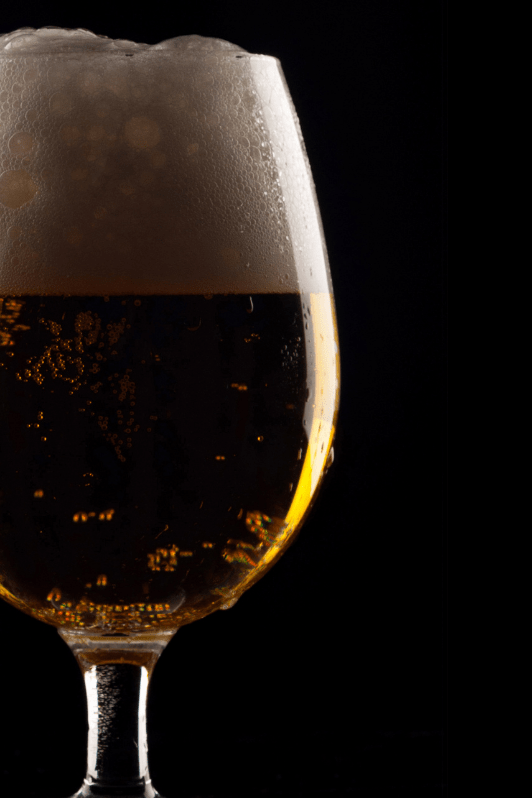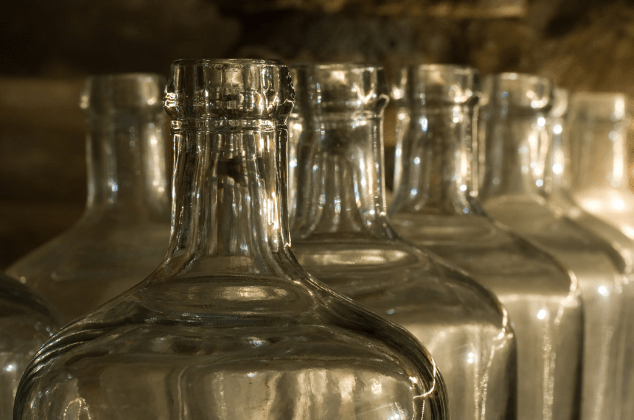In my time as a moderator and frequent contributor on the homebrewing forum on reddit (a/k/a /r/homebrewing). I have seen a lot of questions from beginner and intermediate home brewers. Many common questions are answered in that forum’s New Brewer Resources or FAQs, but if the FAQs addressed every frequently asked question the resources would become unreadably long and hard to use. So some questions end up on the editing floor.

I am tackling some of the left-behind, commonly asked questions in a series of periodic articles. We start off with recipe questions in this installment.
Please let me know in the comments or through our contact form if I am missing a common recipe question, or if you’ve got another frequently asked question that isn’t in most FAQs..
Let’s get right into the questions!
How do I add [insert some fruit or spice here] to my first recipe?
I am excited that fruit- or candy-flavored beers have inspired you to brew your own beer.
Actually, this one question is answered in the /r/homebrewing wiki (see these links for fruit additions and post-fermentation flavorings like spices and extracts).
However, I wanted to address this common request because of what is not always said: if you are a new brewer don’t do it. Or if you’re not going to find joy in your introduction to hobby unless you tart up your beer with additives, then ignore my advice and do it anyway. The number one objective in a hobby is to enjoy it.

But let me explain my advice. Brewing is a craft, just like woodworking or glass blowing. Just as with any craftsman there are stages of mastery (novice, intermediate, advanced or journeyman, and a true master). It takes training — in the form of knowledge and experience — to progress through those stages to the point where you can consistently make objectively good beer. Adding flavor additions to your beer adds another layer of complexity to master, too, while you are still getting a handle on the basics. Just like a first time woodworker’s attempt to make a creative cabinet is likely to fall on its face (maybe literally), successfully getting creative with beer requires some knowledge and experience. Focusing on adding mangoes to an IPA is likely going to delay the day that you have learned to consistently make a good, unadulterated IPA.
Making classic styles of beer allows you to focus on the quality and balance of your beer and any off-flavors, without the balance or off-flavors being thrown off or hidden by your flavor additions. Yet another advantage of focusing on classic styles of beer is that you have the ability to compare your beer against commercial examples of the style.
Obviously, this is my opinion on the best way for new brewers to begin mastering the hobby. Nevertheless, if you won’t have fun without adding a bunch of stuff to your beer, then use the links above to get started. But if you want to become a better brewer faster, then consider learning how to consistently make classic styles of beer.
I don’t want to make someone else’s recipe. How do I design a recipe that’s truly my own?
To emphasize my answer in the question above, brewing is a craft that requires knowledge and experience to progress to the point that you can consistently and successfully apply creativity to beer making.
Recipe design is even harder than recipe application (making consistent beer from a recipe) because, in addition to having knowledge of and experience with the process of making a recipe, iIt requires a deeper knowledge of the ingredients and beer styles as well.
The Brewers Thumbprint
Another thing to consider before assuming you need to make up your own recipe in order to call a beer yours is that, even if you buy a recipe ingredient kit, almost any beer you make will taste uniquely yours.
One of the coolest experiments my homebrew club has done is for each member to take the same wort from a local craft brewer (who generously donated it; RIP Northgate Brewing), and ferment it at home. It was amazing how different the beers turned out.

Now imagine if we produced the wort on our own systems. Perhaps my pale malt came from a different malster than yours. My hops are from a different lot, field, or grower, or maybe picked a week earlier than yours. My bitterness will certainly be different — affected by my brewing rig, my boil vigor, my altitude, and the local atmospheric conditions on my brew day — than yours. And water is 99% of finished beer. Our water may be dramatically different. Time, temperature, atmospheric conditions, ingredient availability, kettle size, heat source,and yeast preparation method, are only a few of the numerous factors that affect the flavor of my beer — and yours!
Brülosophy, one of my favorite brewing crews, also did an experiment on this concept and called it the Brewer’s Thumbprint.
If you made a beer, regardless of the recipe source, it is probably going to taste like your own beer — at least until you reach a level of mastery where you can intentionally make your beer taste like someone else’s beer. So cast aside any doubts that the beer you make, even if you used a kit or followed someone’s recipe, is not your original beer. You made it by hand and it’s your unique potion!

How to Get Started in Recipe Design
Nevertheless, if you are motivated by interest in recipe design, instead of a false sense of being “original”, let me give you some tips to get you started on your journey.
- Open up your culinary world. Try as many kinds of culinary dishes and ingredients as you can. Pay attention to your senses as you do so. You’ll have a tough time identifying that a beer has topical hops that taste like lychee or a malt base like a tea biscuit if you’ve never tried a lychee or a tea biscuit.
- Pay attention to Beer Flavor. Pay attention to what the ingredients you use in a beer taste like in the finished beer.
- Drink Beers with Known Ingredients. Drink commercial beer whose ingredients you know. Maybe the brewer discloses the ingredients on their website or sell sheets, or you can find a reliable clone recipe. Again, note what those ingredients taste like. Eventually, you will be able to detect what people mean when they say pilsner malt is grassy and be able to pick out the flavor of crystal 60L from a lineup.
- Read. Read style profile articles in homebrewing magazines like Zymurgy, Craft Beer & Brewing, and Brew Your Own.
- Read some more. Read Ray Danels’ Designing Great Beers. People say it is dated, but I don’t find it to be so. This is a recipe book without recipes, in which Daniels explains how to analyze styles and come up with a recipe.
- Even more reading. Any book from Randy Mosher is likely to further your knowledge of beer flavors.
- Triangulate. The best way to get started with your first recipe is to find three recipes for that style that are published in books or articles from reliable sources. Note the style and flavor descriptions in the books or articles, and how the ingredients and their ratios are similar and different. Now triangulate your way to your own recipe, “painting” mostly within the boundary lines created by the chosen recipes.
Coming up with your own house recipes is a joyous, but also frequently frustrating, process. I hope this information gives you a start down that path!
Why is five gallons (18.9 L) the standard size for beer recipes?
Well, that’s a great question and, surprisingly, there is not a concrete answer we can cite for five US gallons being by far the most recipe volume. But I have a guess.
There was no committee of homebrewers who decided to make five gallons a universal standard. And in fact, many homebrewers often eventually settle on recipes of various sizes for personal reasons, 10 gallons (37.9 L), 5.5 gallons (20.8 L), 20 L (5.3 gal), 3 gallons (11.4 L), 10L, 2.5 gallons (9.4 L), and one gallon (1.89 L) also being common recipe volumes. But certainly five gallons beats them all in terms of number of recipes.
I suspect the answer lies in the roots of homebrewing in the United States and the America-centric nature of the hobby. After all, most of the world doesn’t use American weights and measures, and even where gallons are used they are often Imperial gallons.
Most of the knowledge around homebrewing came from British pamphlets on homebrewing. Glass carboys were frequently recommended as fermentors in those pamphlets. And carboys were easy to source in the 1970s and 1980s (home brewing began its rise in popularity in the U.S. in the 1970s and became legal at the federal level on February 1, 1979). The most common sizes of carboy were 5 and 6 gallons, which were readily available in the second-hand market.
A common justification for five gallons is that the weight of five gallons of wort in a six gallon carboy (about 59 pounds/26.8 kg) is something a human adult male can comfortably lift and carry
In addition, you cannot underestimate the human need for things to work out evenly. Five gallons nets a yield of about two 24-bottles “cases” of 12-ounce (355 ml) bottles. One source says that 23L is the standard in Australia because it yields three cartons of beer. Furthermore, as homebrewers began seeking solutions for serving home brew on draft, the ubiquity of 5-gallon “corny”-style soda syrup kegs presented a great reason to limit batch sizes to increments of five gallons.
So the reason why we coalesced around 5 US gallons being a sort of standard for recipes is sort of shrouded in mystery. But we can make some educated guesses. Regardless of that many home brewers brew recipes in whatever volume fits their needs. So you shouldn’t feel constrained by a recipe’s stated volume — you can adapt that recipe for any size you want (see the next question).

I have a five gallon (18.9 L) recipe or kit. Can I turn it into a smaller recipe? How?
A similar question is, “I see a lot of five-gallon recipes, but I can’t find any X gallon recipes”.
Yes, you can do this, but if you don’t already know how to do it then I suggest you plug the recipe into a recipe calculator and use the “scale recipe” feature to do it.
Simple, Linear Scaling of Ingredients. On a basic level, recipes scale linearly. You can take a 5-gallon recipe and multiply the ingredients by ⅗ to turn it into a 3-gallon (11.4 L) recipe. Apply that principle to scale a recipe to any size you want.
You can stop thinking about things there, and at a basic level it will make a beer quite similar to what is intended by the recipe. But once you look past that simple scaling, there are deeper levels here.
Digging Deeper
Water. Whether this is a partial boil extract recipe or all-grain recipe, the amount of water needed for your scaled recipe is unlikely to scale linearly because most home brewers’ systems evaporate a smaller volume of wort faster (on a percentage basis) than a larger volume.
Mash Efficiency in All-Grain Brewing. When you adjust the amount of water you use due to the evaporation rate of your system, it will have an impact on your mash efficiency. After all, mash efficiency (%) is just conversion efficiency (%) times lauter efficiency (%). And lauter efficiency is directly correlated to the ratio of (a) the weight of water going through the mash to (b) the weight of grain. For the same reason, mash efficiency may be further affected if you are scaling up the recipe but don’t have enough room in the mash tun to have a comfortable mash with a reasonable ratio of water to grist.
Hop Utilization. Hop utilization, or how much bitterness is extracted from hops in IBU, is also related to the starting and ending volume of wort and the gravity of the wort between those points. As you scale recipes, the bitterness of your recipe may change. Using a brewing calculator will allow you to adjust the hops to maintain the recipe’s IBU target.
I entered a beer in a homebrew competition using someone else’s recipe but someone told me that is cheating. Is that true?
No, that’s not cheating. A homebrew competition is a test of technical brewing skill combined with elements of luck. How closely can you make a beer that matches the written style guidelines being used for the competition, as perceived by your judges on that day, given your relative position in the flights of beer those judges will taste that day. It is common for competitors to use recipes taken from the book Brewing Classic Styles or style profile articles in magazines. The skill comes in how well you can make the beer to fit the written style guidelines.
So go ahead and use the recipe that gives you the best chance of winning, no matter the source, and brew away.comfortable in the knowledge that you are being judged for your ability to match a style with machine-like precision, not for originality or creativity.
I’m entering a homebrew competition and they want me to enter in my recipe and give up my rights to it. That seems sort of shady, and they should pay me for my recipe, right?
Sorry, nope.
First of all, recipes cannot be copyrighted. You can keep it as a trade secret and guard it like the secret formula for Coca Cola coke, but it’s laughable to think that an experienced brewer cannot easily replicate your recipe in the same way that so many home brewers clone commercial beers, often after only one attempt. In fact, even Wikipedia has purported recipes for Coca Cola, and a simple google search finds many recipes that claim to have nailed the signature flavor of this popular soft drink.
Chances are that the recipe is being required because the winner of the competition wins a chance to brew the beer on the sponsoring brewery’s commercial system and have a few barrels of the beer served in their tap room.

Allow me dump a bucket of Bud Ice on your fancy that your recipe is worth anything. The brewery has a production schedule, a whole book of recipes and pilot beers, and probably not enough capacity to brew. Your recipe has probably been come up with before by a hundred other home brewers and will require adjustment to work on the sponsor brewery’s system and fit their point of view and taproom rotation.
What’s going on here is that the brewery is giving back to its roots in homebrewing. The honor of brewing your recipe on their system or pilot system is all yours, not theirs. At best, the brewery might hope that you’ll invite all your friends to come to the brewery to buy a pint of “your” beer.
In some other cases, the competition is one that has strict rules about what ingredients can or must be used in a recipe, and having you submit the recipe allows them to have some sort of comfort that you followed the rules (or are willing to elaborately cheat by coming up with a fake recipe).
So relax about sharing your recipe, and best of luck in winning the competition!
I’m making a recipe and it calls for X, but I can’t get it. What can I substitute?
Sometimes substitutions are easy and at other times substitutions can be difficult or impossible to do. Unfortunately, there is no clear resource for universal one-to-one substitutions. Sometimes an ingredient can be easily substituted with another. At other times, there is no clear direct substitute, and it may involve changing up other parts of the recipe or just rolling with the ingredients you can get, knowing that the beer might turn out a little different than the recipe designer intended.
When I can’t get a malt I need for a recipe, this venerable chart of malt substitutions is one of my go-tos.
As far as hops, there are hop substitution charts like this one from the AHA butI prefer to do an internet search for, for example, “substitute for Challenger hops”.
In terms of yeast substitutions, yeast has the most perceivable impact on a beer. You may be able to substitute malt or hops without a person knowledgeable about the recipe detecting it. But in experiment after experiment, beer drinkers can tell the difference when the yeast is the variable that is changed. When possible, I try to find a strain from the same source from another lab, such as substituting Imperial Tartan if I can’t get Wyeast 1728. I chose this as an example because you have to do your research. Even when online yeast strain charts like this one from Jamil Zainasheff (Mr. Malty) say a strain came from the same source, sometimes the actual performance diverges enough to effectively make them two different strains for the practical brewer. My favorite yeast comparison chart currently is this one from Salt City Brew Supply.
So, while I can’t give concrete advice on substitutions, hopefully this gives you a start. And remember that this is the perfect question to ask on online forums.
Conclusion
Hopefully you enjoyed this discussion of frequently asked recipe questions not typically covered in homebrewing FAQs.
In the next installment of this feature I will cover more questions. Remember, if you’ve got another frequently asked question that isn’t in most FAQs, or if I missed your burning question on recipes, please let me know in the comments or through our contact form.
Until then, cheers and happy brewing!
Chino
